San Pedro cactus isn’t as popular as ayahuasca, peyote, psilocybin, or other plant medicines. However, this powerful, heart-opening experience is slowly coming on people’s radar. You’ve come to the right place if you are preparing to sit in a San Pedro ceremony.
This article has been medically reviewed by Katrina Oliveros, MSN-ED, BSN.
Maria Katrina is a trauma-informed Wellness Educator and Psychedelic Harm Reduction Consultant. Beyond nursing, she supports health & wellness teams through medical aid, psychedelic harm reduction, and integration services.
San Pedro (Echinopsis pachanoi or Trichocereus pachanoi) is a native South American cactus containing psychedelic alkaloids.
The cactus, also known as huachuma or wachuma, has been used as a sacrament for more than 3,000 years in the Andes.[1] In these traditional contexts, San Pedro is used by healers or curanderos to diagnose illnesses. The plant can also be consumed in rituals known as mesas to help heal illnesses or gain insight into everyday problems. San Pedro can be identified due to its fragrant flowers, sometimes only for 24 hours on the columnar cactus.
Nowadays, there’s growing interest in working with San Pedro to address trauma, addictions, or disorders.[2][3] San Pedro contains mescaline, a psychoactive phenethylamine alkaloid that stimulates serotonin receptors. The compound is a hallucinogen and can promote feelings of love, unity, and connection to others and the surrounding world. Many individuals are also motivated to journey with the plant to explore their spirituality, connect with nature, undertake psychotherapeutic work, or enhance creative or cognitive abilities.[4]
Participating in a traditional San Pedro ceremony represents a common way to experience the plant that also honors its sacred cultural context. Experienced curanderos or healers who lead such traditions can create a safe space for those journeying with San Pedro. However, traditional San Pedro ceremonies can also be characterized by sub-psychoactive doses, with those participating not experiencing psychedelic effects.
Some individuals also choose to undertake their own personal San Pedro ceremony, journey with a few trusted others, or experiment with microdosing. Being informed and well prepared is helpful before consuming this sacred cactus and can increase the likelihood of a safe, enriching experience.
Preparing to journey with the San Pedro Cactus
Like all hallucinogenic plant medicines, San Pedro should be treated with respect and reverence. You can pave the way for a positive experience by mindfully sourcing (if you haven’t grown it yourself) and preparing San Pedro. It’s vital to take the time to determine the appropriate dosage, cultivate a safe mindset and setting, and dedicate a full day to journey with the plant.
There is little evidence of any serious, enduring adverse effects linked to mescaline use.[5] What’s more, there is no current evidence of psychological or cognitive deficits among First Nations peoples who have been using mescaline for centuries.[6] San Pedro may not be suitable, however, for individuals with certain physical and mental conditions. Additionally, similar to other psychedelic compounds, feelings of anxiety, panic, disordered behavior, paranoia and depersonalization can occur as mescaline takes effect in the body.[7] A robust body of evidence suggests that cultivating the appropriate mindset and setting can reduce the chances of an unpleasant experience.[8]
A San Pedro experience can last up to 16 hours, so feeling physically and mentally prepared is helpful. Because of the length of the journey and the nature of the San Pedro psychedelic experience, many individuals choose to set aside a whole day for immersion. San Pedro is most commonly taken in the early or late morning, with effects wearing off before falling asleep.
Physical preparation can involve ensuring a good night’s sleep the night before and consuming a light, healthy meal. However, some choose to observe fasting or a specific diet or dieta several days before use.[9] Mental preparation may include consciously cultivating a rested state of mind in the time leading up to the experience and minimizing stressful stimuli. Seasoned users caution against embarking on a San Pedro journey in an anxious, stressed state of mind.[10]
Mescaline dosage
An active dose of oral mescaline ranges from 150-700 milligrams.[11] In ceremonial contexts, San Pedro dosing is calculated based on 3.75 mg/kg of weight. Thus, a standard dose is estimated at 200-300 mg. A threshold dose, or what might be considered a microdose, is estimated at 100mg. At the other end of the spectrum, a high dose is estimated at 200-300mg.[12]
These dosing ranges are not set in stone, however, and are merely guidelines. In addition, physiological and psychological factors, such body weight, metabolism, and feelings regarding the experience, will also influence how the dose is experienced. It is worth noting that many facilitators will pour the medicine dosage off of “feeling” or their intuition. So it is a good idea to ask how dosage is determined before sitting in ceremony.
It’s also essential to be aware that there is no way to ascertain how much mescaline is present in a cactus, making dosing difficult.[13] Fifty grams of powdered cactus may contain as little as 150 mg of mescaline, or as much as 1,150mg of mescaline, since mescaline content varies between cacti.[14] Factors such as where and how the cactus grew (the plant’s terroir) and access to water and sunlight can influence the plant’s potency.
For first-timers working with San Pedro, seasoned journeyers recommend using a piece of the cactus that roughly measures the length and width of the forearm with the hand balled up into a fist.[15]
The total dose can be staggered. For example, if consuming San Pedro as tea, half can be drunk, allowing 30 minutes for the body to settle. Usually, an awareness of the medicine can be perceived as a shift in the body after 30-45 minutes. Another quarter of the brew can then be ingested, waiting and observing for the onset of the effects. After two hours, the hallucinogenic effects of mescaline may become apparent, and the final quarter of the tea can be drunk at this stage.
Staggering the intake can encourage the user to respond mindfully to psychoactive alkaloids as the body metabolizes them. Oral mescaline has a longer half-life than other classic psychedelics, so prolonging the intake beyond a two-hour window may prolong the experience.[16] The total duration of a San Pedro trip usually lasts on average from 8-12 hours, with an afterglow that can linger after the experience.[17]
Curious about psychedelics but don’t know where to find them?
Get Third Wave’s Ultimate Guide to Safely Sourcing Psychedelics. It’s 80 pages of how to find the right psychedelic for your journey.
From little known websites to garden stores to legal loopholes, psychedelics are more accessible than ever.
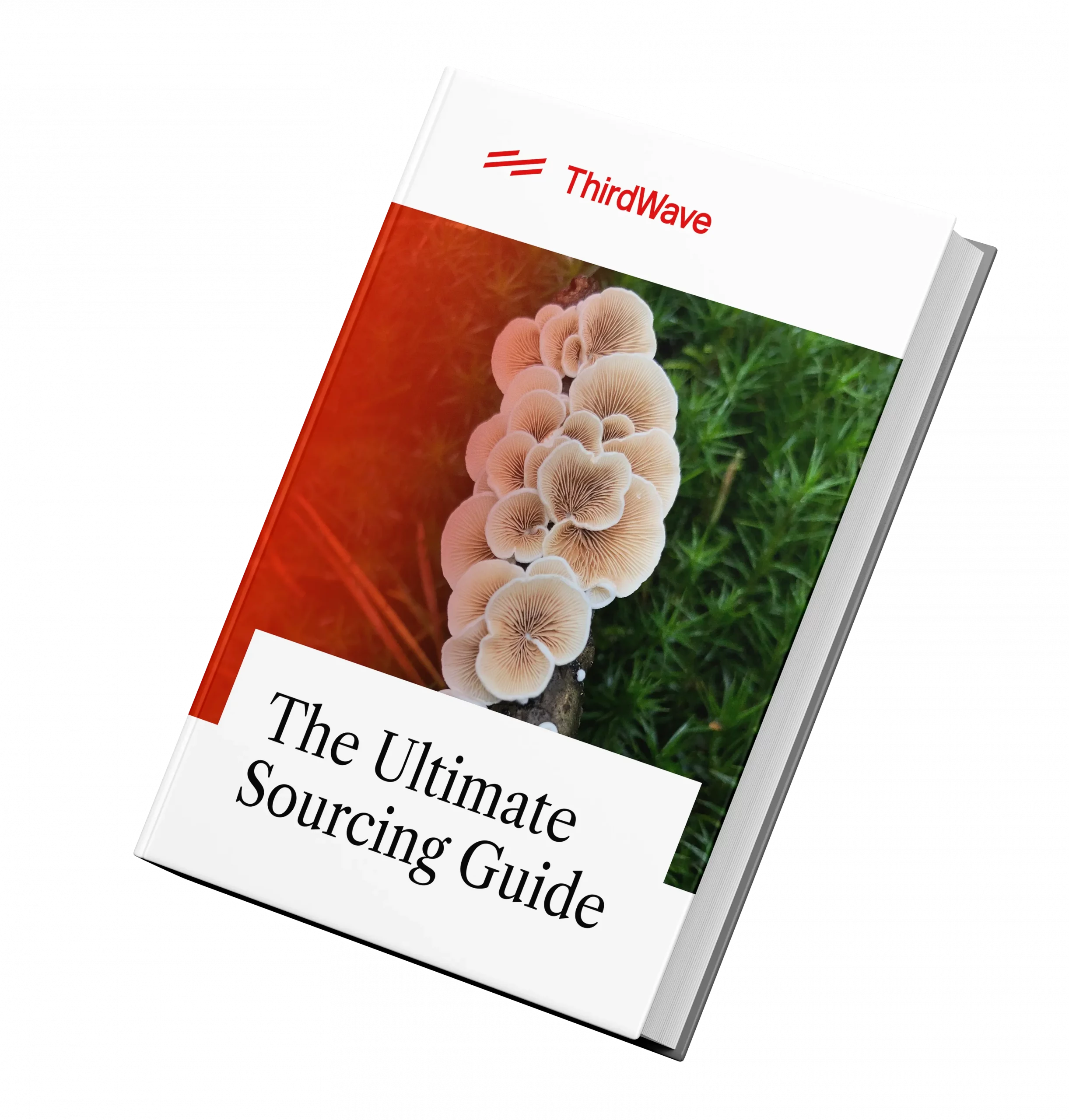
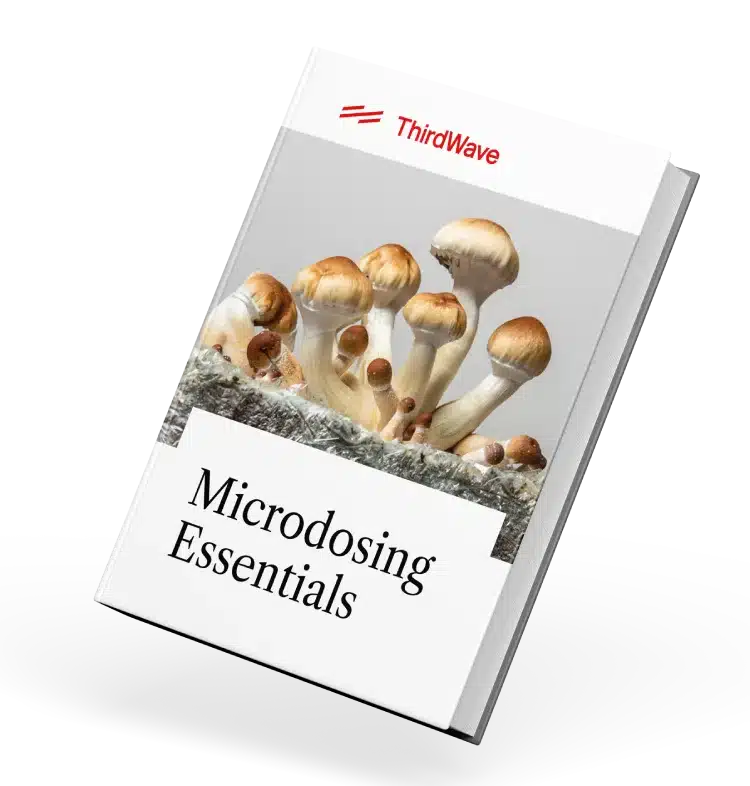
Curious about psychedelics but don’t know where to find them?
Get Third Wave’s Ultimate Guide to Safely Sourcing Psychedelics. It’s 80 pages of how to find the right psychedelic for your journey.
From little known websites to garden stores to legal loopholes, psychedelics are more accessible than ever.
Ways to consume San Pedro
The San Pedro cactus can be ingested in several ways, with oral ingestion representing the most common method of consuming the plant. The cactus flesh can be eaten raw, but the plant must be properly prepared. The waxy outer layer is first removed, with the thorny spines extracted (often with tweezers). The dark green skin is then peeled thinly and consumed—this is where the majority of alkaloids and mescaline reside. The white flesh that sits beneath the dark green skin may cause nausea.[18]
However, the plant is more commonly prepared as tea or a powder, as the raw flesh can be tough and unpleasant to chew. In both cases, the dark green cactus flesh is prepared in the same way. The plant material can also be blended with fruit juice to render the taste more pleasant and reduce the likelihood of nausea or vomiting.[19]
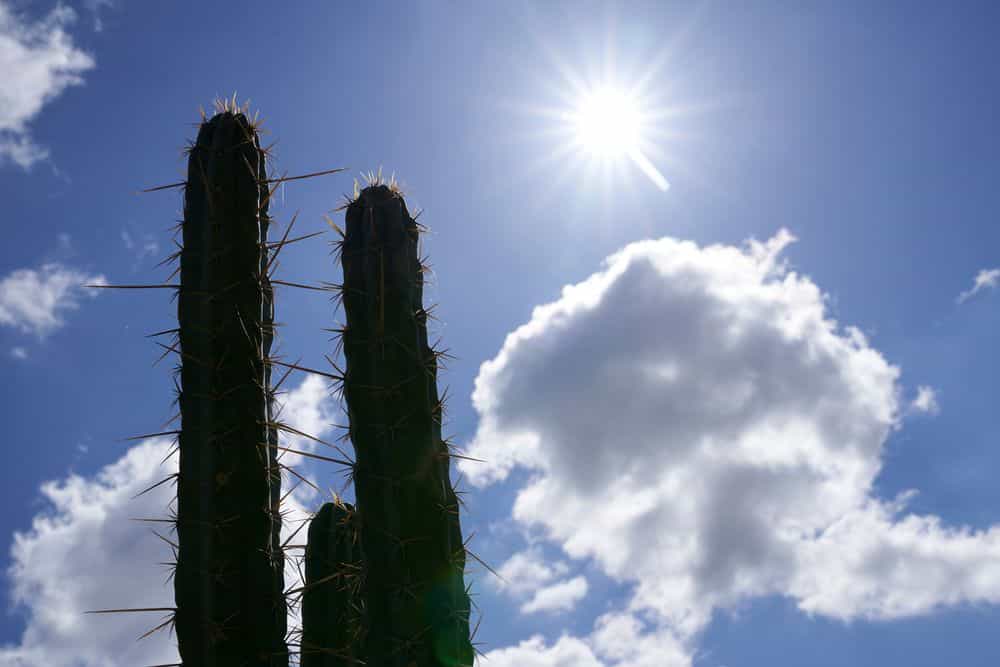
Tea
San Pedro tea is made by boiling the dark green shavings from the cactus with approximately three liters of water. The brew is left over medium heat for three to four hours, resulting in about one 250ml cup of tea. Next, the concoction should be strained using a cheesecloth, and cooled.
The shavings can be boiled again with two liters of water for about two hours to extract more alkaloids. Following the second boiling, the concoction is again strained and blended with the first batch of tea. For a slower brew, the cactus shavings can be left in a slow cooker and simmered at a very low setting overnight before being strained.
Individuals who have taken San Pedro tea often share that it tastes very unpleasant, so many concentrate the liquid as much as possible, so less needs to be consumed (usually a maximum of one to two cups per person). A more concentrated brew can also mean less liquid in your stomach during your trip, which may equate to a reduced likelihood of nausea. In addition, including lemon juice in the tea may help to minimize nausea.
Powder
San Pedro flesh can also be dried and pulverized into a powder. Like the preparation for raw consumption or tea, the waxy outer layer of the cactus is removed, the thorns extracted, and the dark green flesh of the plant peeled back. These shavings can then be dried out in the sun over a day or two, placed in the oven for several hours at a very low temperature, or left in a dehydrator. The powder can then be consumed straight, stirred into a liquid, or inserted into a gel cap.
Now that you’ve decided on a consumption method, you may be wondering where to find San Pedro. We get that question a lot, so we compiled tips and resources for accessing psychedelics in Third Wave’s Ultimate Guide to Sourcing Psychedelic Medicines.
Set and setting
In addition to the logistics of dosage and administration, there are other intangible aspects that influence the experience. Set and setting have been established as the cornerstones of a therapeutically beneficial psychedelic experience. Set and setting are non-pharmacological factors responsible for a significant part of a psychedelic drug’s efficacy.[20]
Research into other psychedelic hallucinogens such as LSD, DMT, ayahuasca, and psilocybin mushrooms has revealed that the right set and setting can contribute to a positive experience.[21][22][23][24][25] Journeying with San Pedro is no different, so adopting an appropriate mindset and selecting a suitable setting is critical.
Set
‘Set’ can be defined as including one’s personality, preparation for the experience, expectations, and intentions. Those familiar with San Pedro emphasize reducing stress and distractions before embarking on a San Pedro “trip” or experience—and also checking in on how you feel.
Open curiosity before a journey is a good sign, while intense fear can be a sign that you may not be ready. A little trepidation is always natural for first-time users. A desire to escape from reality, severe anxiety, mental instability, or psychosis do not represent stable states of mind for working with San Pedro. When an individual has existing disorders or mental illnesses that they wish to address with the medicine, it can be advantageous to work with a guide.
Setting
Setting encompasses environmental factors such as the physical, social, and cultural surroundings in which the experience takes place.[26] There are both advantages and disadvantages to participating in a San Pedro ceremony in a traditional context, engaging in a solitary ceremony, or taking the plant in the company of trusted friends.
The presence of a trusted curandero (healer), shaman, or guide can be instrumental in holding space and cultivating a safe space to experience the cactus. Consuming San Pedro in a traditional cultural context honors the sacred spirit in which the plant has been used historically in Andean regions. However, selecting a guide or curandero requires careful research, and it’s often recommended that those seeking a curandero meet with the individual before the experience.
Solitary journeys are more common. According to one survey of mescaline users, more than three-quarters (78%) reported that they consumed mescaline without the oversight of another person.
Similarly, the actual physical environment where the journey takes place is also of tremendous significance. One-half of respondents to the same survey reported that they primarily consumed mescaline outdoors (47%). Seasoned journeyers often point out that San Pedro is best experienced outdoors, close to nature, somewhere private and peaceful. Cityscapes, or urban parks, are generally not identified as conducive to positive experiences.
Ultimately, personal preference and temperament should guide all of these decisions in the weeks or days before working with San Pedro.
Frequently Asked Questions
Is Peyote the same as San Pedro?
Where can I buy San Pedro?
Can I grow my own San Pedro cactus?
Can I microdose with San Pedro?
Are there any risks associated with San Pedro?
How is San Pedro typically taken?
Do I need to consult with a professional?
Footnotes
[1] San Pedro: Basic Information. (N.D.)The International Center for Ethnobotanical Education, Research, and Service. Retrieved from https://www.iceers.org/san-pedro-basic-info/
[2] Uthaug, M. V., Davis, A. K., Haas, T. F., Davis, D., Dolan, S. B., Lancelotta, R., … & Ramaekers, J. G. (2021). The epidemiology of mescaline use: Pattern of use, motivations for consumption, and perceived consequences, benefits, and acute and enduring subjective effects. Journal of Psychopharmacology, 02698811211013583.
[3] Delgado PL and Moreno FA (1998) Hallucinogens, serotonin and obsessive-compulsive disorder. J Psychoactive Drugs 30: 359–366.
[4] Uthaug, M. V., Davis, A. K., Haas, T. F., Davis, D., Dolan, S. B., Lancelotta, R., … & Ramaekers, J. G. (2021). The epidemiology of mescaline use: Pattern of use, motivations for consumption, and perceived consequences, benefits, and acute and enduring subjective effects. Journal of Psychopharmacology, 02698811211013583.
[5] Carstairs SD and Cantrell FL (2010) Peyote and mescaline exposures: A 12-year review of a statewide poison center database. Clin Toxicol 48: 350–353.
[6] Halpern JH, Sherwood AR, Hudson JI, et al. (2005) Psychological and cognitive effects of long-term peyote use among Native Americans.Biol Psychiatry 58: 624–631.
[7] Arne Bohn, Michiel Kiggin (2022) Altered States of Consciousness During Ceremonial San Pedro Use. Retrieved from https://www.tandfonline.com/doi/full/10.1080/10508619.2022.2139502
[8] Carhart-Harris, R. L., Roseman, L., Haijen, E., Erritzoe, D., Watts, R., Branchi, I., & Kaelen, M. (2018). Psychedelics and the essential importance of context. Journal of Psychopharmacology, 32(7), 725-731.
[9] Diet and Safety (n.d.) San Pedro (Huachuma) The Great Connector. Retrieved from https://huachuma.weebly.com/diet-and-safety.html
[10] Toth, Jerry. (2018) How to Explore Mescaline without a Guide. Medium. Retrieved from https://jerrytoth.medium.com/diy-mescaline-how-to-explore-san-pedro-without-a-guide-ba74e852b455
[11] San Pedro: Basic Information. (N.D.)The International Center for Ethnobotanical Education, Research, and Service. Retrieved from https://www.iceers.org/san-pedro-basic-info/
[12] San Pedro: Basic Information. (N.D.)The International Center for Ethnobotanical Education, Research, and Service. Retrieved from https://www.iceers.org/san-pedro-basic-info/
[13] Erowid. (1994). San Pedro Potency FAQ. Retrieved from https://erowid.org/plants/cacti/cacti_sanpedro_potency_faq.shtml
[14] Erowid. (1994). San Pedro Potency FAQ. Retrieved from https://erowid.org/plants/cacti/cacti_sanpedro_potency_faq.shtml
[15] Toth, Jerry. (2018) How to Explore Mescaline without a Guide. Medium. Retrieved from https://jerrytoth.medium.com/diy-mescaline-how-to-explore-san-pedro-without-a-guide-ba74e852b455
[16] Uthaug, M. V., Davis, A. K., Haas, T. F., Davis, D., Dolan, S. B., Lancelotta, R., … & Ramaekers, J. G. (2021). The epidemiology of mescaline use: Pattern of use, motivations for consumption, and perceived consequences, benefits, and acute and enduring subjective effects. Journal of Psychopharmacology, 02698811211013583.
[17] Pachanoi, T. (2015, Feb 10). A Psychedelic Catalyst for Healing. Retrieved from https://erowid.org/plants/cacti/cacti_info1.shtml.
[18] Toth, Jerry. (2018) How to Explore Mescaline without a Guide. Medium. Retrieved from https://jerrytoth.medium.com/diy-mescaline-how-to-explore-san-pedro-without-a-guide-ba74e852b455
[19] McLaughlin JL (1973) Peyote: an introduction. Lloydia 36: 1–8.
[20] Walach H, Sadaghiani C, Dehm C, et al. (2005) The therapeutic effect of clinical trials: Understanding placebo response rates in clinical trials – a secondary analysis. BMC Med Res Methodol 5: 26.
[21] Uthaug, M. V., Mason, N. L., Toennes, S. W., Reckweg, J. T., Perna, E. D. S. F., Kuypers, K. P. C., … & Ramaekers, J. G. (2021). A placebo-controlled study of the effects of ayahuasca, set and setting on mental health of participants in ayahuasca group retreats. Psychopharmacology, 1-12.
[22] Leary T, Litwin G and Metzner R (1963) Reactions to psilocybin administered in a supportive environment. J Nerv Ment Dis 137: 561–73.
[23] Pallavicini, C., Cavanna, F., Zamberlan, F., de la Fuente, L. A., Arias, M., Romero, M. C., … & Tagliazucchi, E. (2020). Neural and subjective effects of inhaled DMT in natural settings. bioRxiv.
[24] Mogar, R. E. (1965). Current status and future trends in psychedelic (LSD) research. Journal of Humanistic Psychology, 5(2), 147-166.
[25] Daniel, D. N. (2021). ” It kind of polishes all your flaws away”: long-term experiences with psilocybin mushrooms and the influence of set and setting.
[26] Leary T, Litwin G and Metzner R (1963) Reactions to psilocybin administered in a supportive environment. J Nerv Ment Dis 137: 561–73.

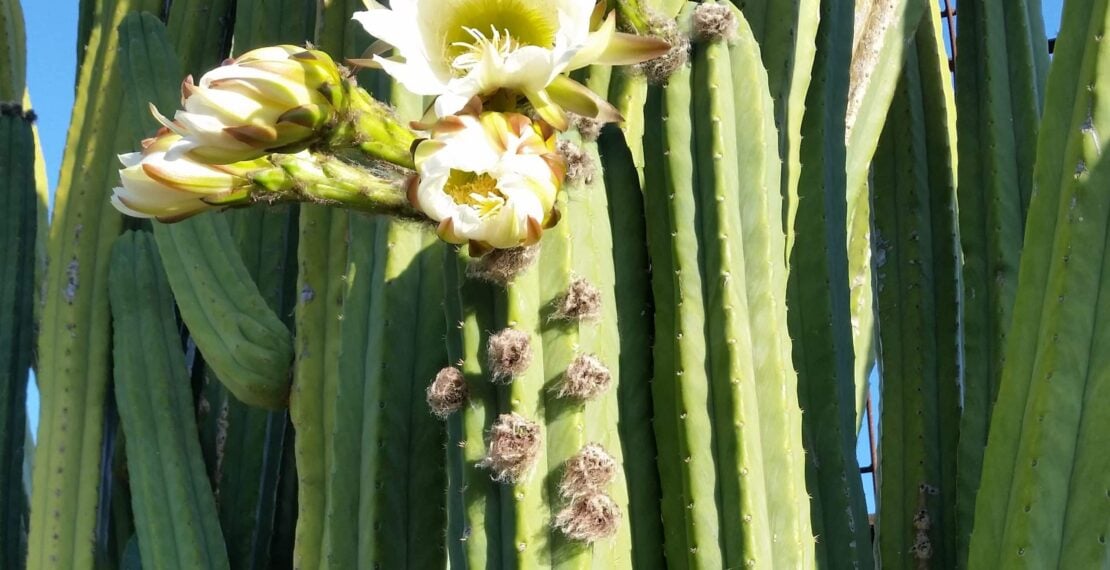
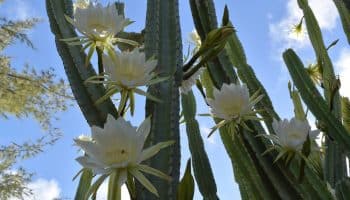
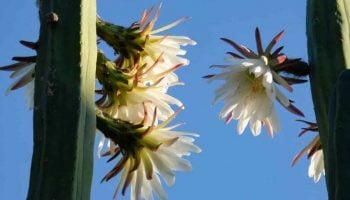
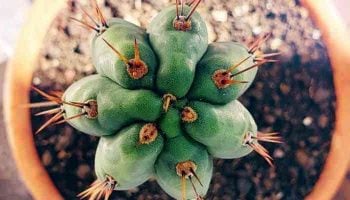
Good
I found this information most valuable and I would like to thank you immensely for posting.
Fantastic article that covers all considerations of the San Pedro journey. The only thing I could not discern was the appropriate dose for a journey with the door open completely, not just ajar, with powdered San Pedro. I see that the dose with a live plant would be the length from elbow to fingertips, but what would this correspond to approximately in the dried powder prepared by the Matses?
Correspondingly, what would the micro-dose range be in the same? I see an image that appears in a teaspoon to be approx 1-2 grams, but not sure I’m correct in that assumption.
Also, what would a recommendation for micro-dosing be in terms of days on/days off? Resistance to mescaline develops quickly, just like psilocybin, if I’m not mistaken, so would a 1 on, 2 off approach be reasonable?
I think the benefits of the micro-dosing of San Pedro would be incredible, given it’s more “present and future” characteristic on a journey, where psilocybin is often “past” and depending upon the individual, “past trauma and pain”.
Most people microdose San Pedro using either the Stemets or Fadiman protocol. For further microdosing information you can refer to this guide – https://thethirdwave.co/microdosing/mescaline/
Send me everything!
Hi Karen,
Check out these resources to learn more about mescaline and sourcing psychedelic medicines.
https://thethirdwave.co/microdosing/mescaline/
https://thethirdwave.co/product/sourcing/
I second Brent’s comment. The article and provided link has still not covered sufficient information for the consumption of microdosing
I have now experimented myself using what I would consider to be 1 flat teaspoon mixed into water every 2 days . It is still very gentle experience.
Thanks for your note Ana. Please check out our Guide to Microdosing Mescaline for more details.
https://thethirdwave.co/microdosing/mescaline/
Hope this helps!
good points to look at. I’ve grown San Pedro, Peruvian T, Bolivian T, which I have one (BT) in the back yard W/1 column almost 6 feet tall, (looks so nice) for decades. Keep taking cuttings as I move, pass them out to like minded friends when I do change addresses. Never processed them, (OMG, can I acutually stop doing something for 10-12 hrs to experiance them?) but one of these days……mainly growing to keep the energy alive. 🙂
Great article, Emma. I’ve found that the more I work with San Pedro and integrate the insights that come up during ceremony, the more San Pedro rewards me… and on it goes. A truly reciprocal relationship, and others have reported the same experience.
One other tip to help with the taste of the tea: I know some people suck on a lime immediately after drinking the medicine – quiets the aftertaste. 🙂
More about my experiences with San Pedro can be read here on my blog, http://sanpedrostories.com – Thank you!
Gday , how much flesh do you cut off a cactus to make say 250ml of tea ?
HI Ashely – That’s a great question to post in our community platform: https://community.thethirdwave.co/ We actually have some cactus experts in there.
I’m very curious as to its effects on a former drinking problem, as well as other drugs.a
I will venture out this coming year!
The alkaloids in this species have yet to be named.I have found the more mundane the use of this tool will bring the user a “no high”.I have found it is very insightful on how the Nazca lines were created.?It is a ticket to other worlds.
Greetings citizens.
I am currently following the above instructions and am at the commencement of the primary boiling stage.
I am assisting my neighbour, the grower and provider, in a clinical trial.
I am the guinea pig.
It is the last day of my 6th decade on this lovely, but benighted ball of rock.
I intend to start my 7th decade tomorrow with a lovely cup of tea!
I am an old Brit’ junky punk rocker after all.
I will savour the lemon.
The revolution will continue.
Peace.
Out.
I can add a fact of interest about the metabolism of mescaline. The MAO enzyme will begin the process of elimination from the body and using a reversible MAOI inhibitor such as Syrian Rue or B. Caapi will enhance and prolong the effect. This link contains a detailed document of the complete metabolic and neurological effect of Syrian Rue, http://SyrianRue.org/Soma
This is a Rue + Pedro experience report:
8:30am 1.5g of Syrian rue
9:30 – 10:45 100g total of dry Pedro powder expanded into about 16oz of thick green pulp drink: 50g then 25g then 25g during this time more rue to total about 3 to 3.5g of rue
An hour later some salivating from lingering disgust, no vomit, bowels purge a few times till about 2:30pm first notice of trails.
3:pm trails
4pm-5pm fractals, the pebbles in the road align to designs /, colors (peak?)
7pm vivid colors in the dark + closed eye fractals
12:00 thru past 3:30am dilated pupils still, closed eye visuals , enhanced star gazing
6:00am final effects
Thank you I have 7 year old mature plants that flower yearly new spawns of these cacti take 2 years or so to mature and produce flowers . Can indicate my San Pedro flowers I often have viewing parties for the flower but have never consumed or given any because no one has asked and I don’t know where to find a shaman.
Can I use the flowers for anything ?